Museo del Design del Friuli Venezia Giulia – Associazione di Promozione Sociale
P. IVA e CF 02863400301 – info@mudefri.it
In order to describe this fortunate combination of materials and understand its success, we have to compare it metaphorically to the “skeleton and muscle mass” that forms the body of most vertebrates or “iron rod and cement” that makes up the reinforced concrete of buildings, bridges, etc… in other words it is the combination of a material that withstands mechanical stress and another that holds the components of the former together and gives the whole its shape. In short, VETRORESINA© confirms once more the saying that “strength lies in unity”.
Vetroresina©, materiale composito
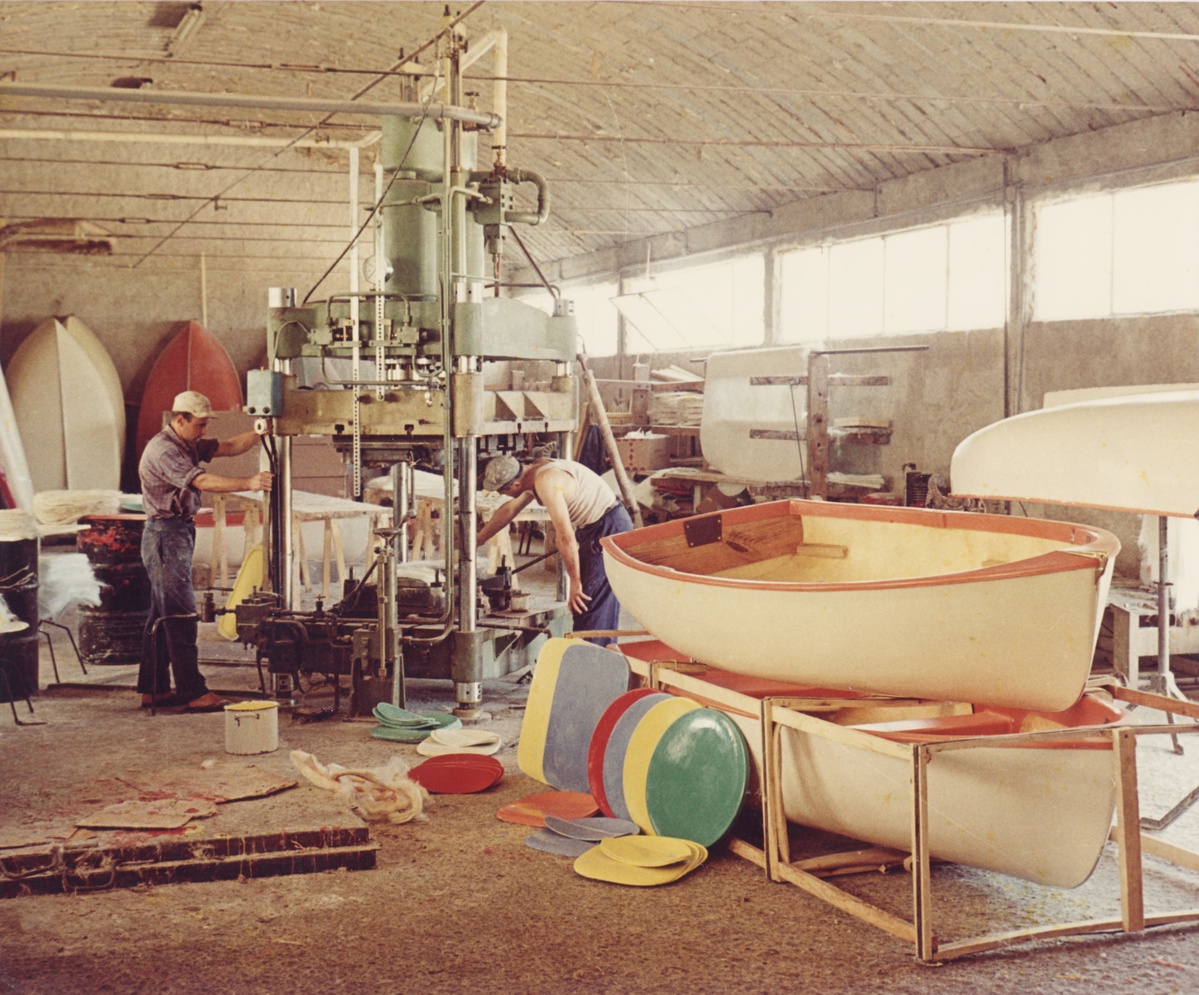
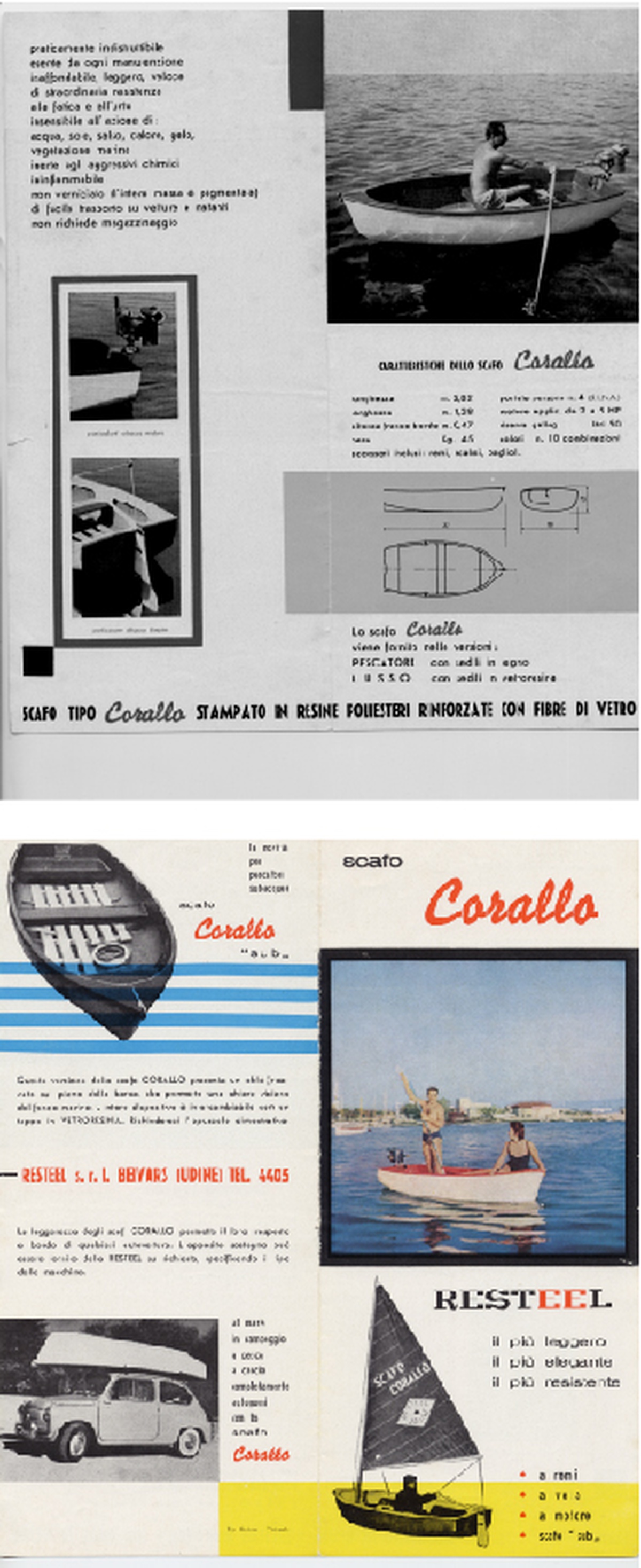
Vetroresina© is a good choice for a small boat, also because it is economical. The weight-to- strength ratio of the material used to construct the hull is important, and speed especially is a decisive factor. Consequently, many boats with Vetroresina© hulls are still in use today.
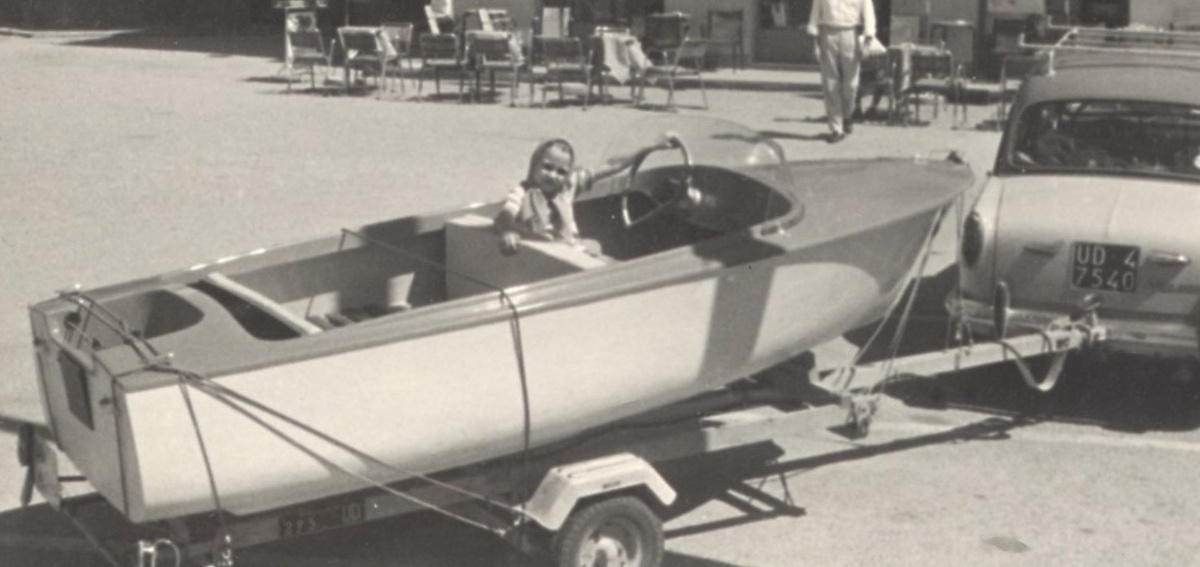
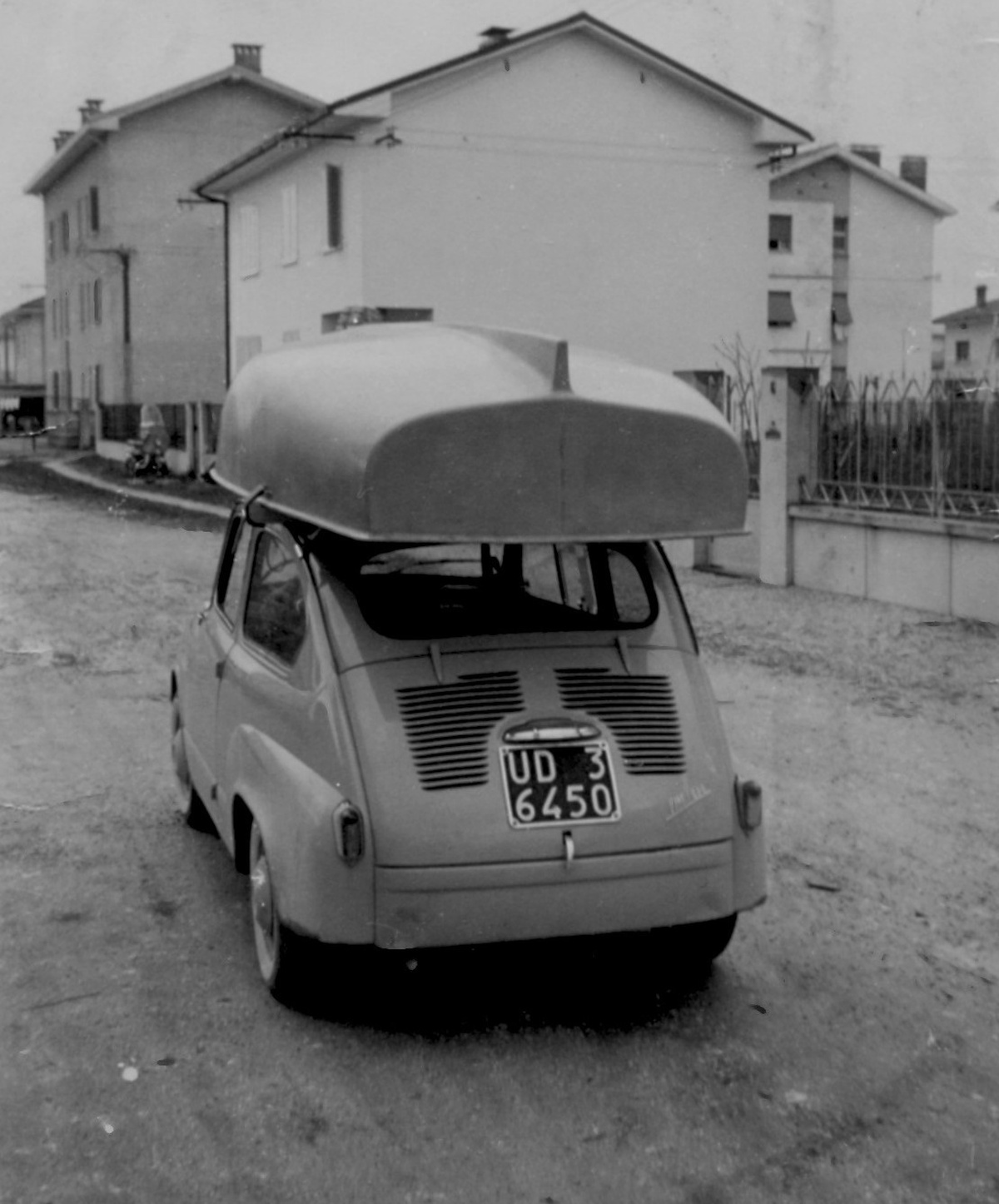
An example of a basic boat made of Vetroresina© is “Corallo”, manufactured by Resteel in 1960.
Lightweight yet strong, it could even be transported on the roof of a car; it had a glass panel in the floor to see to sea bottom through; the “deluxe” version had seats integrated into the hull.
Dating back to the same period, the moscone rowing boat was highly popular along the Italian coasts in the Sixties. It had characteristic fittings: a small metal and Vetroresina© seat and a backrest that could be raised when needed. It was made entirely of Vetroresina©, which was used in place of traditional wood.
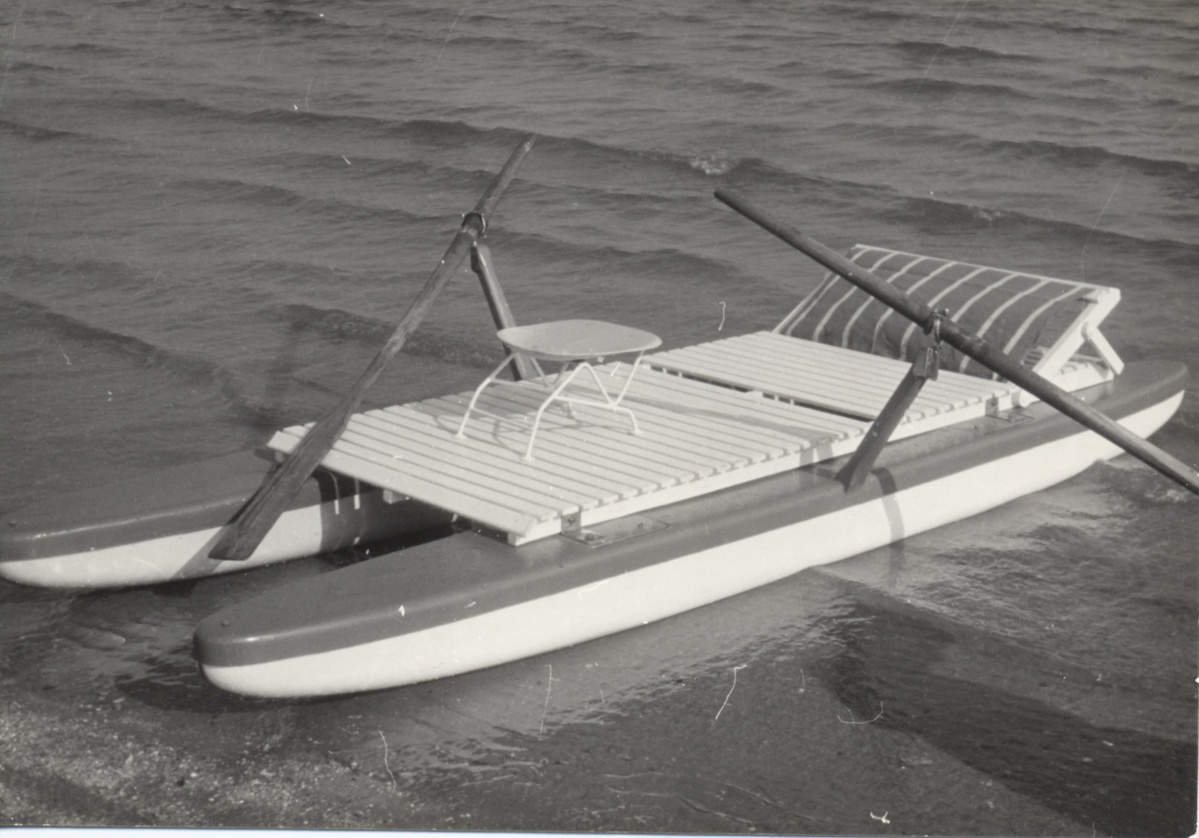
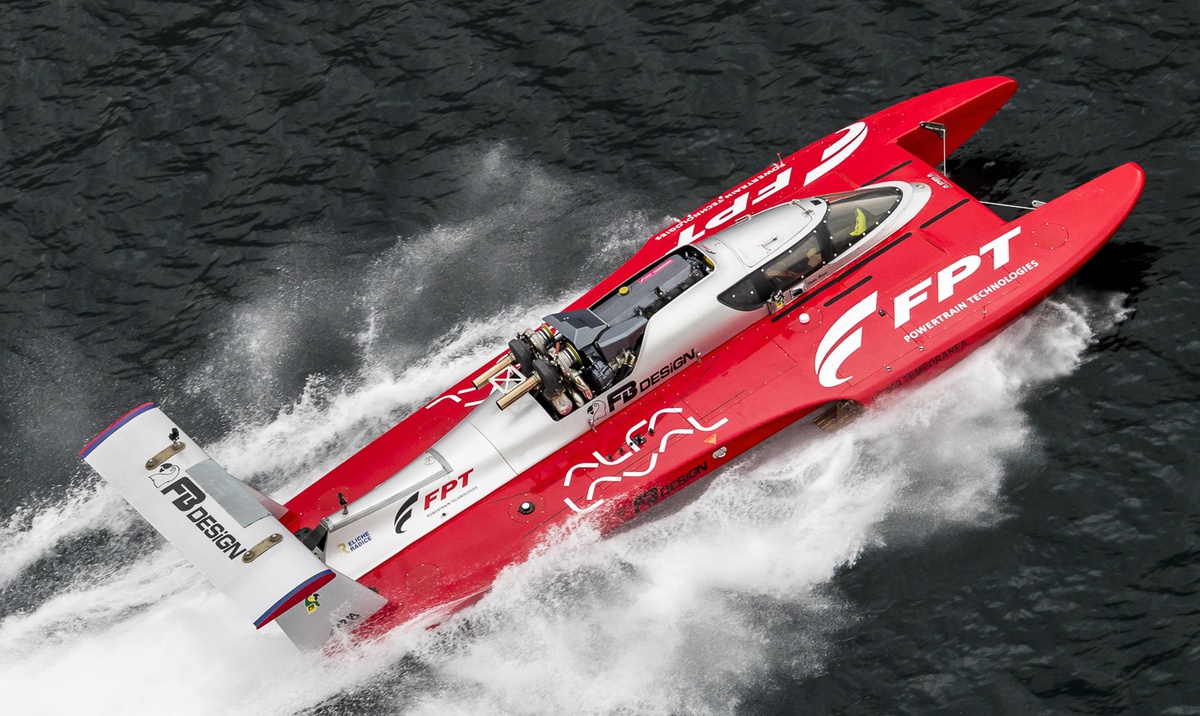
Indeed a boat made of Vetroresina© set the record for the highest speed ever achieved. In March 2018, a speed of 277 km/h was achieved by the hull designed by Fabio Buzzi, several times world powerboat racing champion and founder of “FB Design” in 1971.
The “St. Tropez” boat designed and manufactured by Carlo Riva was highly successful from the 70s to the 90s. The historic Riva boatyard, which built highly prestigious and glamorous wooden motorboats, then successfully converted to Vetroresina©, used in the manufacture of this boat.
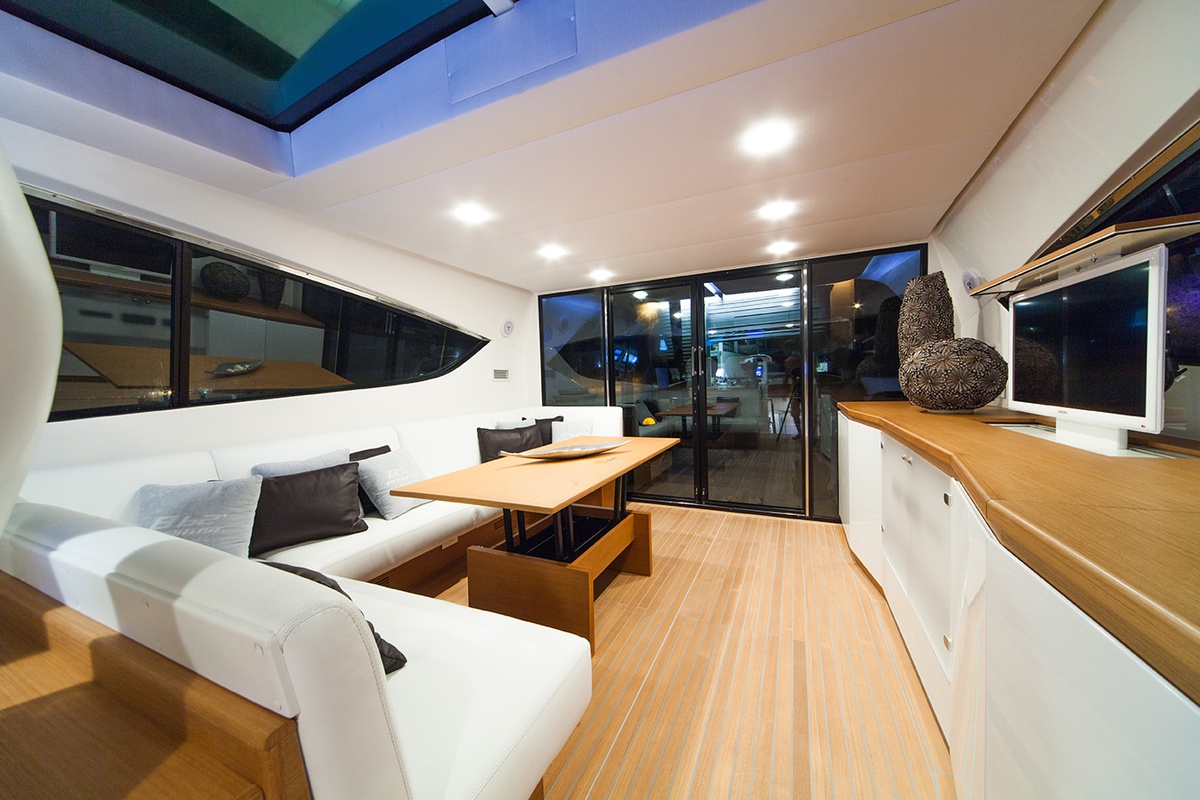
Not only racing boats but also luxury vessels. Veritable homes on water equipped with all comforts. The “B62 Pininfarina” from 2011 by yacht designer Marco Abbate is an example of elegance and efficiency. Three spacious cabins with private bathrooms and large expanses of glass.

In Friuli Venezia Giulia there is a rich heritage of boat design, ranging from Fincantieri to numerous small boatyards. This is due to the thousand-year- long history of ports and harbours along the coast and rivers, which made it a transit area for goods travelling from east to west and north to south of Europe.
Vetroresina© also enables large, high quality hulls in terms of aesthetics and finish to be mass produced, such as the Bavaria C57, 17 metres long and over 5 metres wide designed by Cossutti Yacht Design for Bavaria Yachts in 2017.